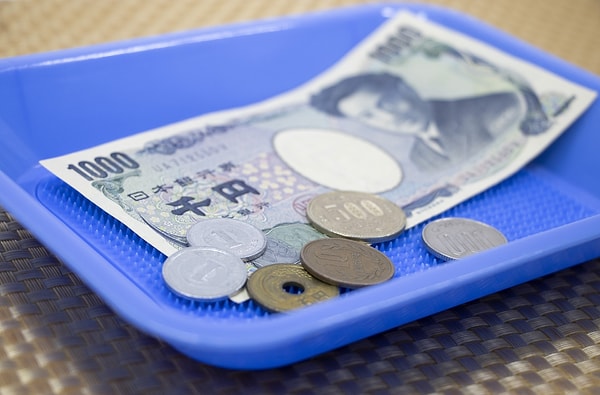Why Do Japanese People Give Money in a Special Tray?
One of the first things that catches the eye of anyone visiting Japan are the small trays placed on the counters. Regardless of whether you're in a restaurant, a store, or a cafe, payments are always made on these trays. Directly handing over money is not particularly well-received. But why is that? Is it a matter of hygiene, politeness, culture? Or does its origin trace back to a much older tradition?
Those little trays we see at the cash registers in Japan are referred to as "karuton".

The word actually originates from the French term 'carton,' which means cardboard. These trays are used as a place to put the money before handing it over.
However, the objective isn't solely to minimize contact.
From a cashier's perspective, it's quite practical. When the money is placed on the tray, not only can the given amount be easily counted, but it can also be checked right in front of the customer.
In short, this practice is a method that puts both the customer and the employee at ease. It eliminates any disputes like 'I gave this much, you gave less change back.'
The history of these trays, which everyone finds ordinary today, actually dates back to the early 1900s.

Mitsukoshi, one of Japan's first major department stores, pioneered the cash payment system in its time. Previously, merchants typically operated on credit. However, Mitsukoshi broke new ground with its fixed price and cash payment policy. This new arrangement led to a more frequent exchange of money.
In a dictionary published in 1918, the term 'kaikeibon' or account tray is mentioned. It's even noted that during that period, some trays were fitted with rubber at the bottom to prevent the clinking of coins. Hence, these small trays have been a part of Japan's payment culture for roughly a century.
In Japanese culture, the concept of personal space holds significant importance.

Hand-to-hand money exchange is often perceived as 'overly intimate' or 'uncomfortable'. The tray has become a graceful way to maintain this distance. Many cashiers find it more respectful to leave the money on the tray rather than giving it directly to the customer.
This habit has become an inspiration in other countries, especially after the pandemic.
If you're shopping in a cafe or market in Japan, instead of directly handing over your money or credit card, place it on that small tray. The cashier will then return your change in the same manner, using the tray.
If you wish, you can also listen to the artificial intelligence's interpretation of why the Japanese use a money tray!
Keşfet ile ziyaret ettiğin tüm kategorileri tek akışta gör!

Send Comment